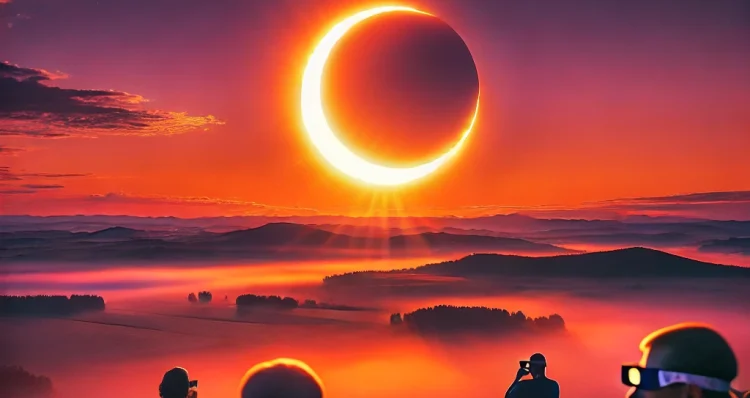
Solar Eclipse 2025: Best Viewing Times, Locations & Safety Tips for March 29 Event
Dubai | March 26, 2025 | 0 | newsSpectacular Celestial Event on March 29, 2025
Astronomy enthusiasts and casual skywatchers alike are set to witness a breathtaking partial solar eclipse on March 29, 2025. This astronomical event will be visible across the northeastern United States and parts of Canada, creating a stunning crescent-shaped sun at sunrise.
What is a Partial Solar Eclipse?
A partial solar eclipse occurs when the moon partially covers the sun, allowing a portion of sunlight to remain visible. Unlike a total solar eclipse, where the sun is completely obscured, this event will create the illusion of a “bite” taken out of the sun, forming a spectacular crescent-like shape.
When and Where to Watch the Solar Eclipse 2025
According to Space.com, the eclipse will occur between 4:50 a.m. and 8:43 a.m. ET, with over 800 million people expected to have a view of this celestial phenomenon.
Best Viewing Locations and Timings (ET):
-
New York: 6:35 a.m. – 7:12 a.m.
-
Massachusetts: 6:27 a.m. – 7:08 a.m.
-
Maine: 6:13 a.m. – 7:17 a.m.
-
Pennsylvania: 6:46 a.m. – 7:08 a.m.
-
New Jersey: 6:43 a.m. – 7:06 a.m.
-
Virginia: 6:50 a.m. – 7:03 a.m.
Additionally, the eclipse will be visible across Connecticut, Rhode Island, Delaware, Maryland, New Hampshire, Vermont, West Virginia, and Washington, D.C. However, the visibility will depend on local weather conditions and atmospheric clarity.
The Science Behind the Eclipse
During this event, the moon will partially block the sun, altering the way sunlight reaches Earth. The extent of coverage will vary depending on the observer’s location. At sunrise, the eclipse will appear more dramatic, with the sun resembling a glowing crescent. As the event progresses, the sun will gradually regain its full brightness.
How to Safely Watch the Solar Eclipse
Observing a solar eclipse requires proper eye protection to prevent retinal damage. Unlike a lunar eclipse, which is safe to view with the naked eye, looking directly at the sun during a solar eclipse without protection can lead to permanent eye damage, commonly known as “eclipse blindness.”
To safely view the eclipse, experts recommend using ISO-certified eclipse glasses that meet the International Organization for Standardization (ISO) standard 12312-2. Organizations like NASA and the American Astronomical Society (AAS) have approved specific manufacturers for safe solar viewing. Regular sunglasses are not sufficient to protect against harmful UV radiation.
Frequently Asked Questions
What Will Happen on March 29, 2025?
On March 29, 2025, a deep partial solar eclipse will be visible across the Northern Hemisphere, including North America, Europe, and parts of Africa. While this event won’t feature totality, it will still provide a captivating celestial spectacle for millions.
How Long Does a Total Solar Eclipse Last?
Total solar eclipses typically last between 10 seconds and 7.5 minutes. The longest total eclipse in recorded history is set to occur on July 16, 2186, with a duration of 7 minutes and 29 seconds.
Final Thoughts
The solar eclipse of March 29, 2025, will be a spectacular sight, offering astronomy lovers a chance to witness a rare celestial phenomenon. Mark your calendars, prepare your eclipse glasses, and find a prime viewing location to experience this extraordinary event safely!


